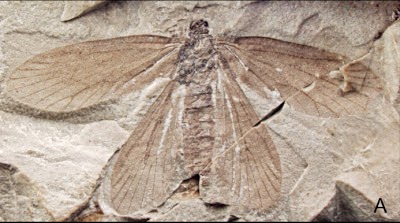Stem-mining Moths of the family Nepticulidae are found across the world, but are at their most numerous and diverse in Southern Europe. The larvae feed on shrubs and herbs, making leaf or stem mines which enable them to tunnel through the soft tissues of the host plant as they feed, rather than living on the surface where they would be exposed to predators, although they typically emerge from the stems before pupating, forming a cocoon attached to the stem or leaf.
In a paper published in the journal Zootaxa on 3 December 2012, Povilas Ivinskis of the Nature Research Centre in Vilnius, Lithuania, Erik van Nieukerken of the Naturalis Biodiversity Center in Leiden, the Netherlands and Jolanta Rimsaite, also of the Nature Research Centre in Vilnius, describe a new species of Leaf-mining Moth from Eastern Europe.
The new species is placed in the genus Trifurcula, and given the specific name lituanica, meaning ‘from Lithuania’, although the species was in fact found in seven countries, Lithuania, the Czech Republic, Austria, Slovenia, Romania, Bulgaria and Greece, and is likely to be more widely distributed, as its larvae grow inside the stems of Salvia pratensis (Meadow Sage) which is found from the Netherlands to Russia. The adults are 2.2-2.4 mm brown Moths, the males slightly larger than the females, but with similar markings.
Trifurcula lituanica, adult specimens in dorsal view. (1) Male from Lithunia; (2) female from Austria. Scale bars are 1 mm. Ivinskis et al. (2012).
The eggs are laid on the lower part of the stem of the host-plant, with the larvae constructing a mine up to 23 cm in length before emerging in August to form a cocoon within the epidermis of the stem, but elevated compared to the rest of the stem and clearly visible. The larvae is apparently confined to one internode (i.e. it does not seem able to cross points at which the stem branches). The mine grows in width as the larvae progresses, eventually forming up to two thirds of the stem width. The frass (excreta) of the larvae remain within the mine, helping with its concealment. Up to four such mines were found in a single stem.
(23) Leaf mine of Trifurcula lituanica larvae within a stem of Salvia pratensis. (24) Exit wound caused by larvae of Trifurcula lituanica emerging to form a pupae. (25) Stem of Salvia pratensis cut to reveal larvae of Trifurcula lituanica. (26-28) Cocoons of Trifurcula lituanica. Ivinskis et al. (2012).
See also…
Follow Sciency Thoughts on Facebook.






